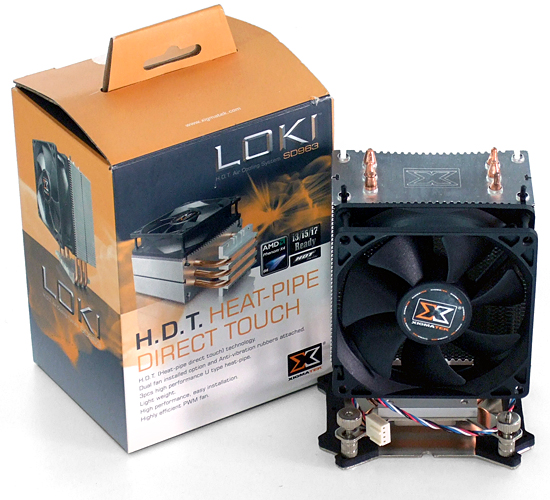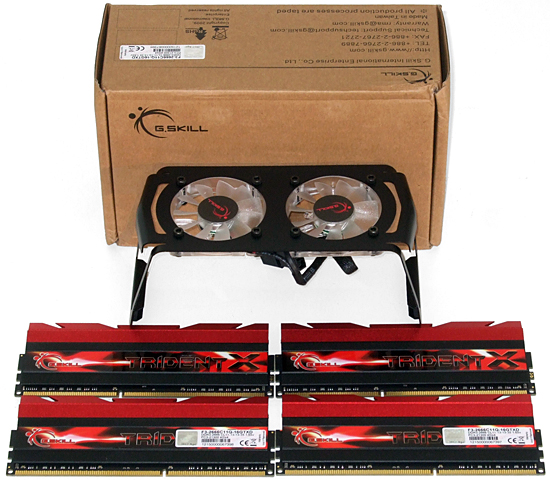Four Z77-Based Mini-ITX Motherboards, Reviewed
Yes, you can get all of the functionality enabled by Intel's Z77 Express chipset in a tiny mini-ITX form factor! We round up four motherboards that uniquely approach the gaming and media center markets with a range of features and prices. Which is best?
Test Settings And Benchmarks
We retained most of the hardware from our previous Z77 motherboard round-ups, but were not able to reach the same CPU clock speeds. A shift over to Windows 8 was our biggest change, and services crashing under that operating system appeared to limit what we could achieve compared to Windows 7.
| Test System Configuration | |
|---|---|
| CPU | Intel Core i7-3770K (Ivy Bridge): 3.50 GHz, 8 MB Shared L3 Cache, LGA 1155 |
| CPU Cooler | Xigmatek Loki w/Zalman ZM-STG1 Paste |
| RAM | G.Skill F3-17600CL9Q-16GBXLD (16 GB), DDR3-2200 at DDR3-1600 CAS 9, 1.50 V |
| Graphics | Nvidia GeForce GTX 580 1.5 GB 772 MHz GPU, GDDR5-4008 |
| Hard Drive | Samsung 470 Series 256 GB, SATA 6Gb/s SSD |
| Sound | Integrated HD Audio |
| Network | Integrated Gigabit Networking |
| Power | Seasonic X760 SS-760KM, ATX12V v2.3, EPS12V, 80 PLUS Gold |
| Software | |
| OS | Microsoft Windows 8 Professional RTM x64 |
| Graphics | Nvidia GeForce 310.70 WHQL |
| Virtu MVP | Version 2.1.114, GPU Virtualization Only, No HyperFormance, No Virtual Vsync |
| Chipset | Intel INF 9.3.0.1025 |
Graphics card crowding on the ASRock and MSI boards forced us to track down a 92 mm cooler. It might be natural to blame the smaller heat sink and fan for our reduced overclocking success, but lower ambient temperatures during the winter actually helped ensure that our CPU never got close to its thermal threshold. That is, at least after we modified the Xigmatek Loki installation kit.
Threaded spacers visible in the image above prevented the Loki’s base from applying enough pressure against our CPU’s heat spreader. Removing those spacers fixed that issue. The spacers were likely designed for a thicker LGA package, such as the long-outdated LGA 775 or the less-archaic LGA 1366.
While G.Skill’s F3-17600CL9Q-16GBXLD provides the default DDR3-1600 CAS 9 settings we want for benchmarks, it’s no longer fast enough to push the limits of today’s best memory controllers. The firm provided a set of its F3-2666C11Q-16GTXD Trident X DDR3-2666 specifically to extend our overclocking capabilities.
I updated this round-up’s benchmark suite to match that of our most recent System Builder Marathon for several reasons. Chief among these was a split in the high-end mini-ITX motherboard market. The suite leans heavily on the gaming and transcoding apps typical of LAN event and media center usage.
| Benchmark Configuration | |
|---|---|
| 3D Games | |
| Battlefield 3 | Campaign Mode, "Going Hunting" 90 Seconds Fraps Test Set 1: Medium Quality Defaults (No AA, 4x AF) Test Set 2: Ultra Quality Defaults (4x AA, 16x AF) |
| F1 2012 | Steam version, in-game benchmark Test Set 1: High Quality Preset, No AA Test Set 2: Ultra Quality Preset, 8x AA |
| Elder Scrolls V: Skyrim | Update 1.5.26, Celedon Aethirborn Level 6, 25 Seconds Fraps Test Set 1: DX11, High Details No AA, 8x AF, FXAA enabled Test Set 2: DX11, Ultra Details, 8x AA, 16x AF, FXAA enabled |
| StarCraft II | V1.5.1, "Tom's Hardware Guide V2" custom map, 60 Seconds Fraps Test Set 1: High Details, High Quality Test Set 2: Ultra Details, Extreme Quality |
| Adobe Creative Suite | |
| Adobe After Effects CS6 | Version 11.0.0.378 x64: Create Video that includes three streams, 210 Frames, Render Multiple Frames Simultaneously |
| Adobe Photoshop CS6 | Version 13 x64: Filter 15.7 MB TIF Image: Radial Blur, Shape Blur, Median, Polar Coordinates |
| Adobe Premeire Pro CS6 | Version 6.0.0.0, 6.61 GB MXF Project to H.264 to H.264 Blu-ray, Output 1920x1080, Maximum Quality |
| Audio/Video Encoding | |
| iTunes | Version 10.4.1.10 x64: Audio CD (Terminator II SE), 53 minutes, default AAC format |
| Lame MP3 | Version 3.98.3: Audio CD "Terminator II SE", 53 min, convert WAV to MP3 audio format, Command: -b 160 --nores (160 Kb/s) |
| Handbrake CLI | Version: 0.98: Video from Canon Eos 7D (1920x1080, 25 FPS) 1 Minutes 22 Seconds Audio: PCM-S16, 48,000 Hz, Two-Channel, to Video: AVC1 Audio: AAC (High Profile) |
| TotalCodeStudio 2.5 | Version: 2.5.0.10677: MPEG-2 to H.264, MainConcept H.264/AVC Codec, 28 sec HDTV 1920x1080 (MPEG-2), Audio: MPEG-2 (44.1 kHz, Two-Channel, 16-Bit, 224 Kb/s), Codec: H.264 Pro, Mode: PAL 50i (25 FPS), Profile: H.264 BD HDMV |
| Productivity | |
| ABBYY FineReader | Version 10.0.102.95: Read PDF save to Doc, Source: Political Economy (J. Broadhurst 1842) 111 Pages |
| Adobe Acrobat X | Version 10.0.0.396: Print PDF from 115 Page PowerPoint, 128-bit RC4 Encryption |
| Autodesk 3ds Max 2012 | Version 14.0 x64: Space Flyby Mentalray, 248 Frames, 1440x1080 |
| Blender | Version: 2.64a, Cycles Engine, Syntax blender -b thg.blend -f 1, 1920x1080, 8x Anti-Aliasing, Render THG.blend frame 1 |
| Visual Studio 2010 | Version 10.0, Compile Google Chrome, Scripted |
| File Compression | |
| WinZip | Version 17.0 Pro: THG-Workload (1.3 GB) to ZIP, command line switches "-a -ez -p -r" |
| WinRAR | Version 4.2: THG-Workload (1.3 GB) to RAR, command line switches "winrar a -r -m3" |
| 7-Zip | Version 9.28: THG-Workload (1.3 GB) to .7z, command line switches "a -t7z -r -m0=LZMA2 -mx=5" |
| Synthetic Benchmarks and Settings | |
| 3DMark 11 | Version: 1.0.1.0, Benchmark Only |
| PCMark 7 | Version: 1.0.4 x64, System, Productivity, Hard Disk Drive benchmarks |
| SiSoftware Sandra 2011 | Version Version 2013.01.19.11, CPU Test = CPU Arithmetic / Cryptography, Memory Test = Bandwidth Benchmark |
Get Tom's Hardware's best news and in-depth reviews, straight to your inbox.
Current page: Test Settings And Benchmarks
Prev Page Z77IA-E53 Firmware Next Page Results: 3DMark And PCMark-
where are the dtx mobos for those that want a gaming graphics card as well as a dedicated sound card that isnt onboard crap?Reply
-
tarkhein Asus maintains a list of other technologies only found on its platform, including the ability to charge smartphones and tablets through its USB portsReply
That technology is available from MSI and Asrock (and Gigabyte, but that's irrelevant in this roundup). Look up MSI i-Charger and Asrock App Charger. -
Crashman tarkheinAsus maintains a list of other technologies only found on its platform, including the ability to charge smartphones and tablets through its USB portsThat technology is available from MSI and Asrock (and Gigabyte, but that's irrelevant in this roundup). Look up MSI i-Charger and Asrock App Charger.All three companies have similar high-current charging features, but Asus extends them to non-Apple devices. The comment was originally left out due to the similarities and added later due to the differences.Reply
There was a big discussion between editors over whether or not the P8Z77-I Deluxe should get an award. The only award for "best features" is Tom's Hardware Approved, and that award is reserved for products that are clearly and obviously superior. The P8Z77-I Deluxe was a better board, but we had to look fairly hard to see it (it wasn't clear or obvious). -
Crashman amuffinSo many variations between each board when it comes to OC......LOL, welcome to Windows 8.Reply -
abbadon_34 "We retained most of the hardware from our previous Z77 motherboard round-ups, but were not able to reach the same CPU clock speeds. A shift over to Windows 8 was our biggest change, and services crashing under that operating system appeared to limit what we could achieve compared to Windows 7."Reply
CrashmanLOL, welcome to Windows 8.
How about using Windows 7? Was a reason you HAD to use 8 despite encountering issues? Is there some contractual obligation or monetary incentive to use the lastest version regardless of performance issues? Or at least test them both, it's only 4 motherboards. -
enewmen I think Mini-ITX will be the new standard size.Reply
It's not like the 80s/90s where you needed a full size AT/ATX motherboard with many slots for the ST-506 controller, floppy disk controller, serial port, parallel port, Sound Blaster card, VGA card, token ring card, and an extra cooling fan.
EDIT:
I will later get a Mini-ITX later & Silverstone case, stick in a Noctua NH-C12P & Haswell i7, and my Nv 680. That will have very high power density and worthy of being my "main" PC. (and it will OC) -
abbadon_34 One issue I see is the PCI-E x16 slot is at the very bottom of these boards, and most video cards use two slots, requiring a larger case than one that simply supporting the motherboard based on ITX/mini-ITX dimensions. I'd be interesting in exploring the limitations of such configurations, and whether these boards are effectively limited to single slot video cards (and performance), require larger cases than is assumed, or specific case configurations.Reply -
Crashman abbadon_34Was a reason you HAD to use 8 despite encountering issues?Standardization. The thought of having a spare drive on hand simply for testing O/C never even crossed my mind after hearing the "s" word.abbadon_34One issue I see is the PCI-E x16 slot is at the very bottom of these boards, and most video cards use two slots, requiring a larger case than one that simply supporting the motherboard based on ITX/mini-ITX dimensions. I'd be interesting in exploring the limitations of such configurations, and whether these boards are effectively limited to single slot video cards (and performance), require larger cases than is assumed, or specific case configurations.It's called DTX, it's mentioned in the article's FIRST paragraph, and Tom's Hardware even has DTX case reviews. Since most people don't know what DTX is, most case manufacturers have changed the label to read "Mini ITX". Still, there are a bunch of DTX cases out there caring the Mini ITX label.Reply


